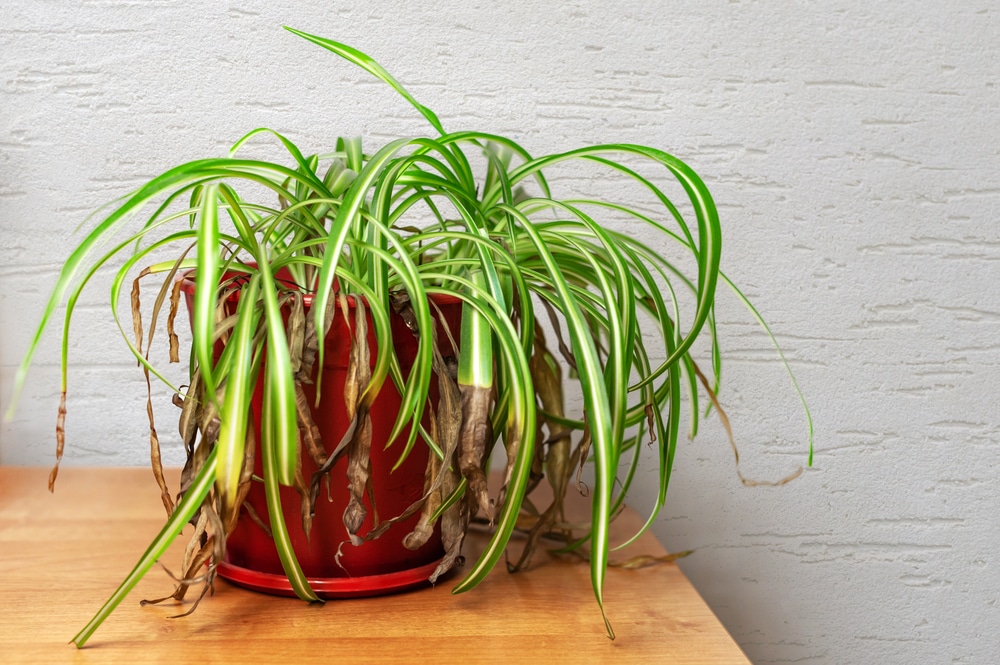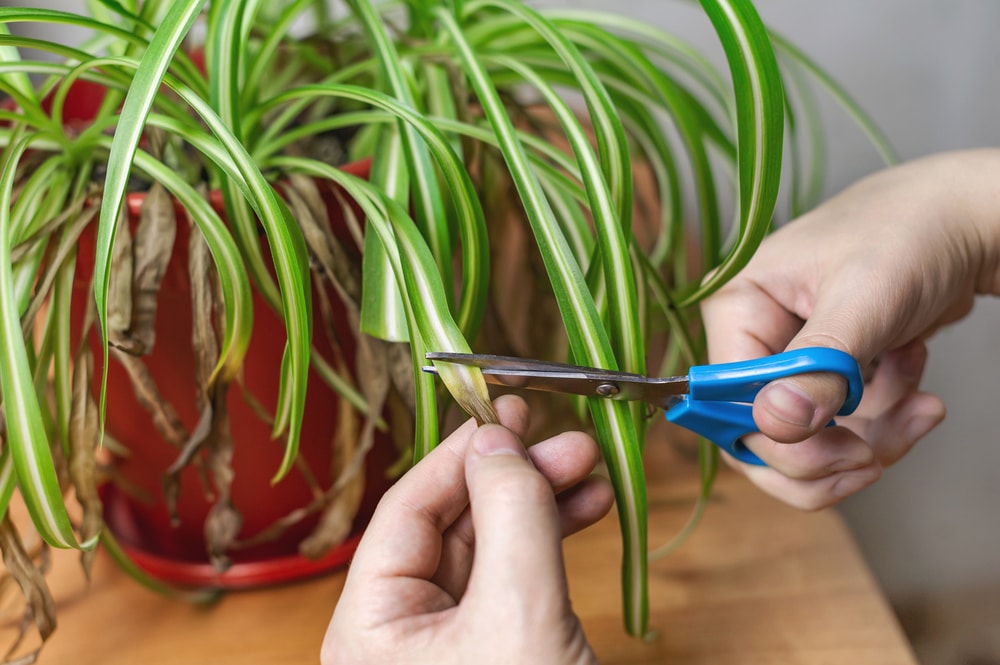Spider plants, or Chlorophytum comosum, are common household plants for decoration. They are also known as ribbon plants or spider ivy. Reviving a spider plant when it starts to deteriorate is easier said than done, but it is not impossible!
There are a few reasons a spider plant dies. The four most common reasons are overwatering, underwatering, excess fertilizer, and low humidity. Root rot is also a common reason they die. Here’s how to revive this plant if it’s no longer thriving.
How To Know Your Spider Plant is Dying

If your spider plant begins to turn brown, it’s a sign that it is not healthy. They can tolerate a bit of drought, but underwatering leads to a dying spider plant. Overwatering can also cause root rot due to excess moisture.
Ways To Revive a Spider Plant
Here are a few ways to revive a spider plant:
- Keep the room humid
- Water the plant generously
- Re-pot the plant
- Move it out of direct sunlight
Plant Care After Underwatering and Overwatering
Keeping the room or the area around your plant humid is key to reviving the plant if it has experienced a long period of underwatering. Spray the leaves often to re-create a more tropical and humid climate that these plants are accustomed to in the wild.
If you notice your plant dying due to underwatering, generously water your plant when it is time to do so. Most of the time, the water only penetrates the top level of soil, so be sure to water the plant until the water comes through the drainage hole.
However, don’t let the plant sit in the excess water. Excess standing water can cause root rot! Instead, pour out the excess water.
Overall, spider plants are more susceptible to overwatering than underwatering because they are suited for more humid, tropical climates. If you overwater them, it’s best to try and propagate the plant. Once root rot happens, it is nearly impossible to revive the plant without propagation.
If you find that the cause is overwatering soon enough, you can catch it before it becomes root rot and salvage the plant. To do this, use a cloth soaked with disinfectant to carefully wipe the healthy roots to prevent any fungi or bacteria spread. Rinse out the soil, then re-pot with fresh soil.
Keep the soil moist, but don’t soak it for the next month. Mist the plant a few times per week to help it acclimate.
Plant Care After Excess Fertilizer
If the plant is dying due to excess fertilizer, re-pot the plant and place it in new soil. This change should help without any other interventions. The leaves will likely be yellow and start drooping if too much fertilizer is the culprit for your plant’s demise.
Plant Care After Excess Sun Exposure
Plants, like people, can get sunburned when exposed to too much sunlight. If you think the spider plant has been exposed to too much sunlight, you should remove it from that location and prune the individual leaves that have turned brown and are sunburned. These leaves won’t turn green again, so cut the brown ones off.
Wrapping Up
Reviving a plant is the first line of defense to eliminate waste and the hassle of purchasing another plant. However, there are instances where you can’t come back from an issue, like root rot, where you need to get rid of the plant altogether.
Remember to water your plant in the amount that is recommended specifically for the species. Keep it where the sun shines on it, but not too much. Finally, ensure you cultivate an environment that the plant likes to be in for success as a plant parent! Spider plants can also be grown outdoors in the right climate.
